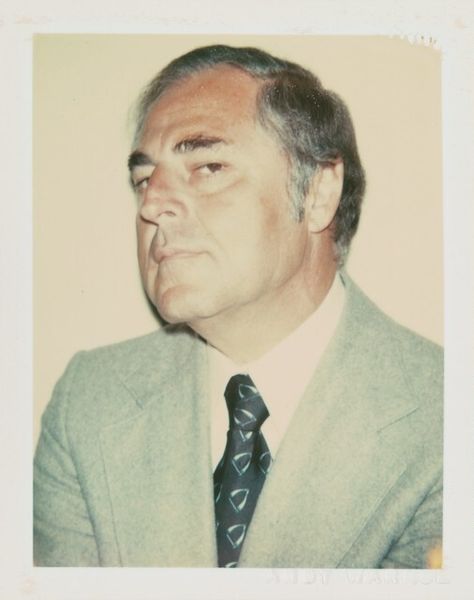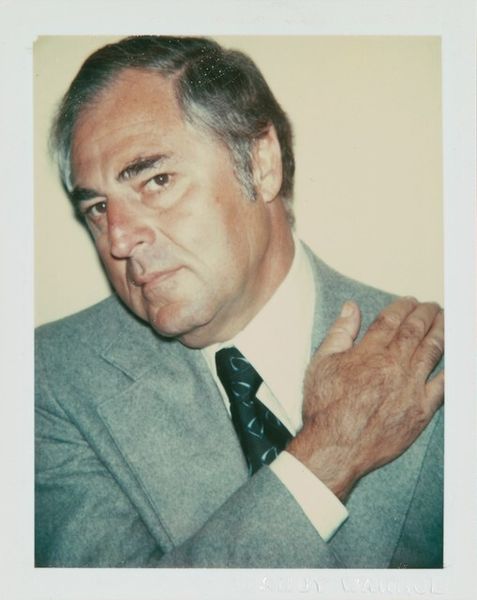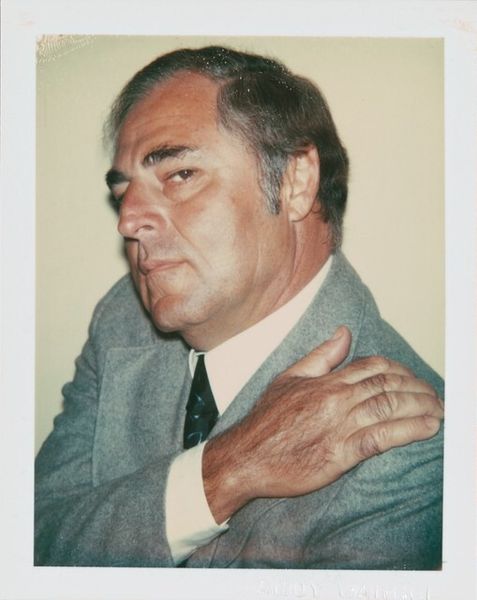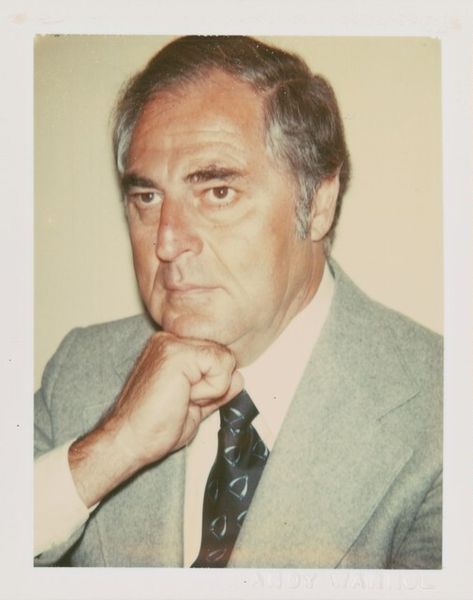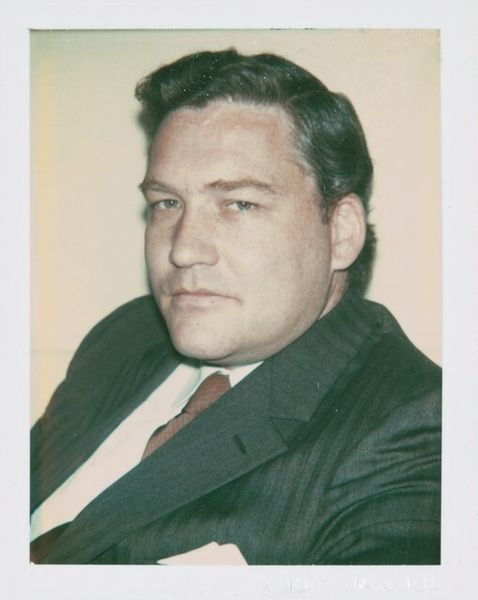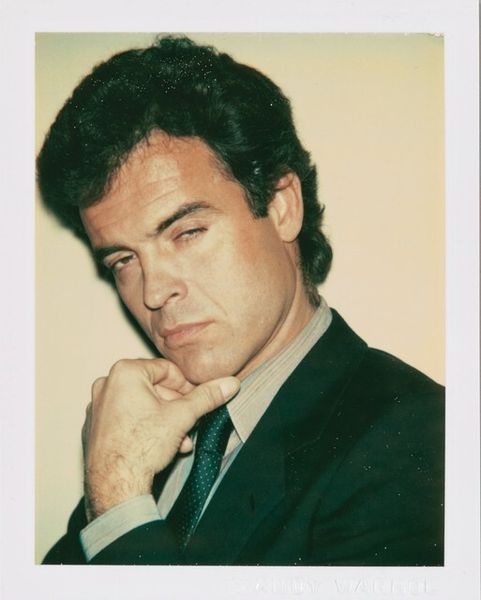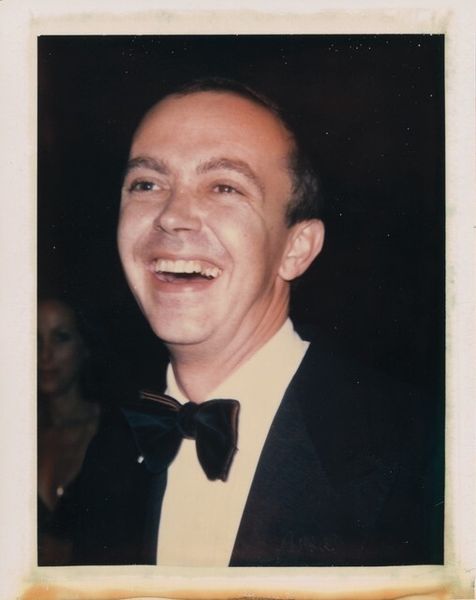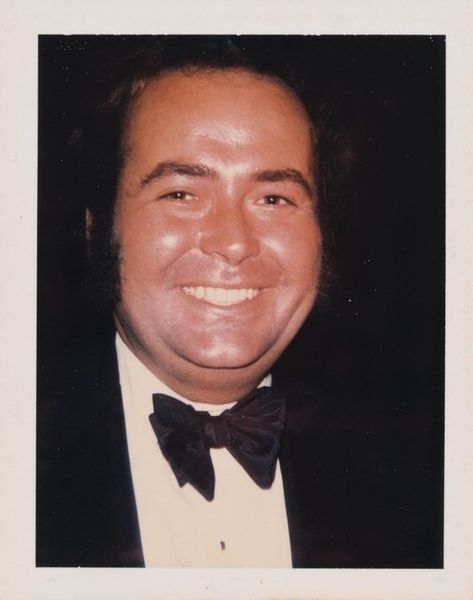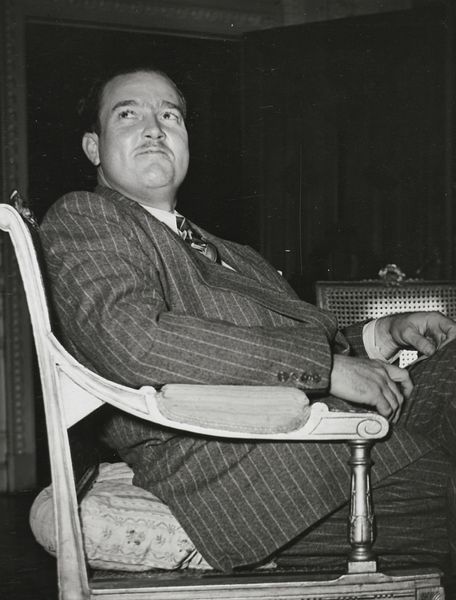
#
picture layout
#
low key portrait
#
portrait subject
#
portrait reference
#
photo layout
#
animal drawing portrait
#
portrait drawing
#
portrait art
#
fine art portrait
#
celebrity portrait
Dimensions: image: 9.5 × 7.3 cm (3 3/4 × 2 7/8 in.) sheet: 10.8 × 8.6 cm (4 1/4 × 3 3/8 in.)
Copyright: National Gallery of Art: CC0 1.0
Curator: Here we have Andy Warhol's "Miles Fiterman," created in 1975. It’s a striking portrait, done in Warhol’s signature style. Editor: My first impression is thoughtfulness. The way he’s resting his chin on his hand gives a sense of introspection. Almost as if he's caught in a moment of deep contemplation. Curator: Warhol’s portraits often played with the idea of celebrity and identity. Fiterman, a businessman and philanthropist, perhaps commissioned this work. It makes you wonder what message he wanted to convey. The almost pastel color palette adds to the kind of softened gravity, no? Editor: Exactly, Warhol always blurred the lines, didn’t he? Commissioned or not, it's interesting how he takes someone not inherently known and presents them with this iconic aura. It’s that Warholian touch, making everyone feel a bit like a star, while holding the mirror up to aspiration and commerce in art, I mean look at how perfectly the grey tones harmonize from his suit to his hair; so measured in approach. Curator: Absolutely. And it speaks to how Warhol democratized portraiture. Before, it was often the realm of royalty or the elite, now someone like Fiterman gets the Warhol treatment. It highlights the changing social landscape and the role of art within it, becoming far less reliant on stuffy patronage to thrive in the public space. Editor: I always find Warhol's portraits intriguing. He manages to capture a surface likeness, sure, but also hints at something deeper, something slightly detached. Are we seeing the real Fiterman, or just the image he—or Warhol—wants us to see? It is something of a collaboration in how an image like this manifests; it's truly a cultural time capsule in many respects. Curator: And the fact that it is an accessible and reproducible format – a print – emphasizes Warhol’s engagement with mass culture. A far cry from the singular, precious portraits of centuries past. This redefines the accessibility to artistic representation in such a bold way, don't you think? Editor: Without a doubt. It invites a questioning of value, representation, and the very essence of celebrity and societal aspiration. Well, I think that's a new way to approach a portrait, considering how Andy seemed to deconstruct some long-held notions of celebrity, which makes works like these forever resonant.
Comments
No comments
Be the first to comment and join the conversation on the ultimate creative platform.
